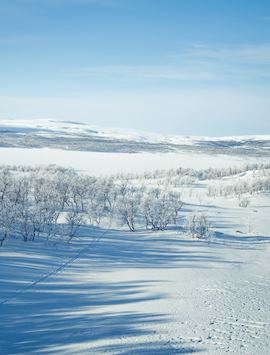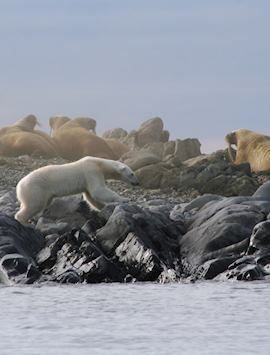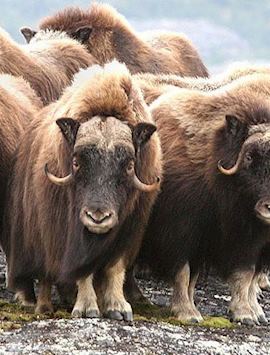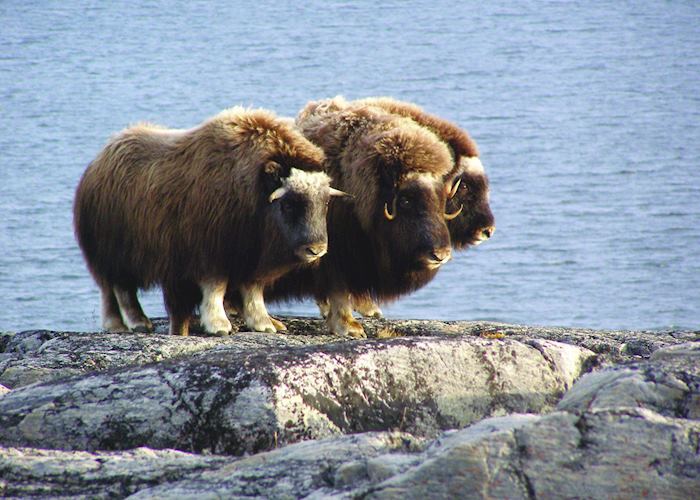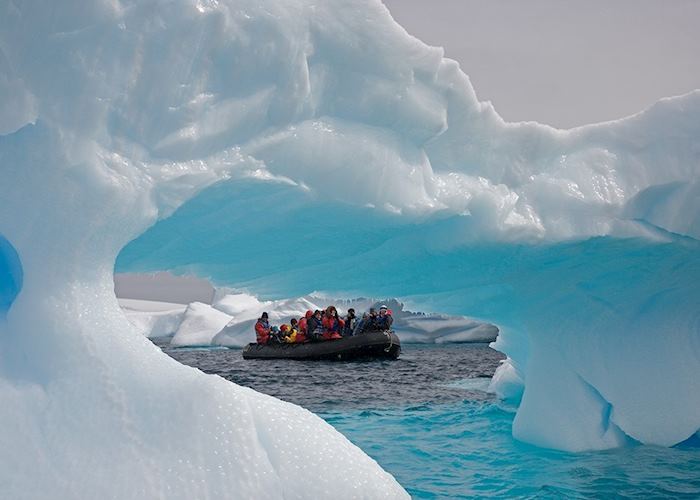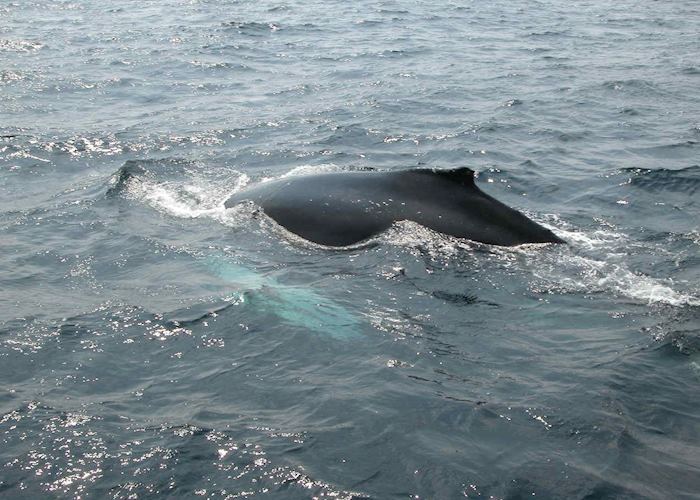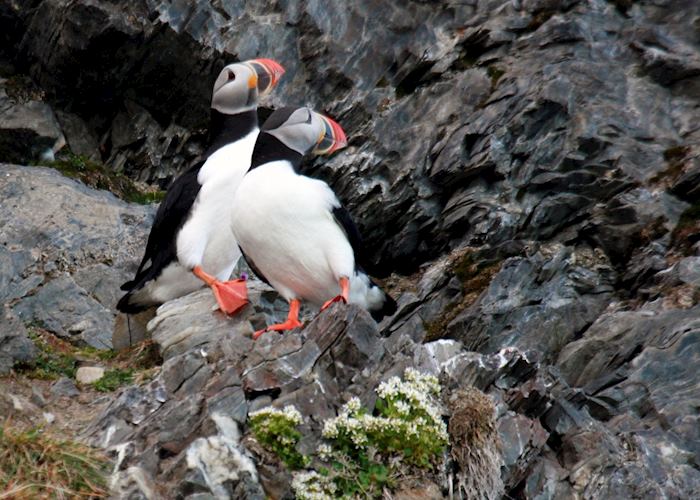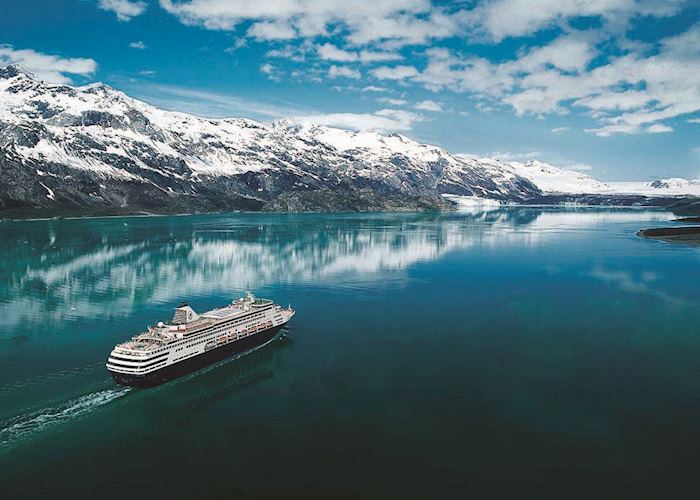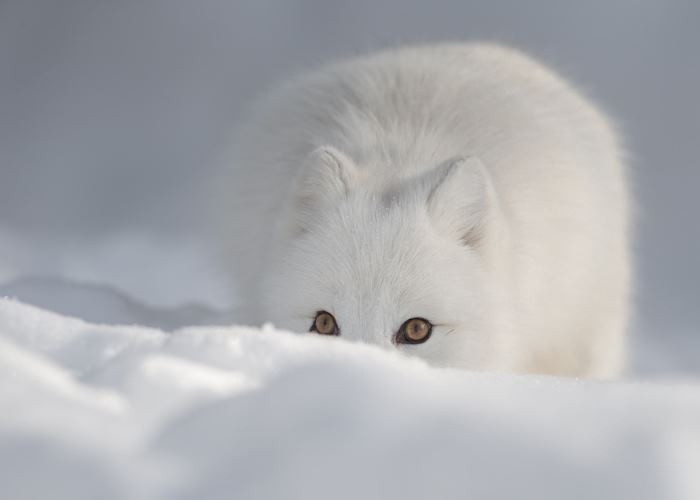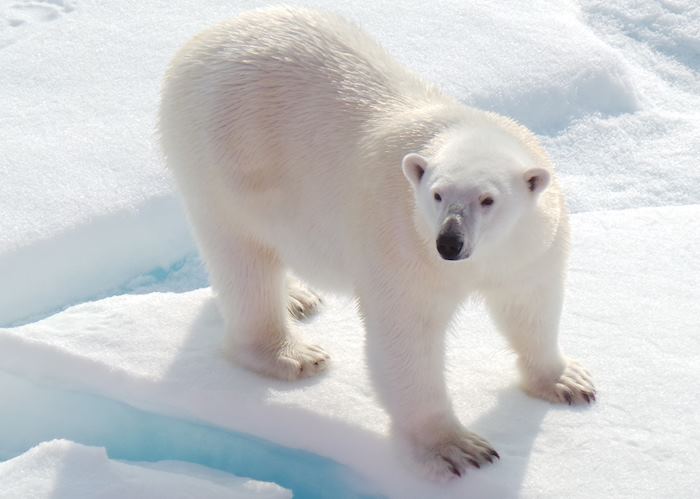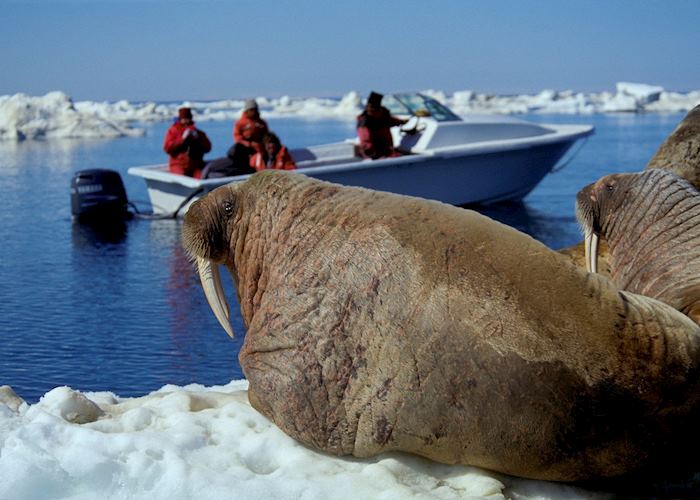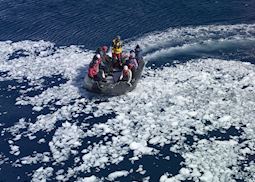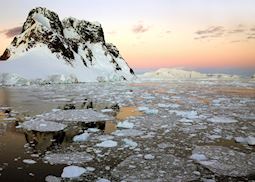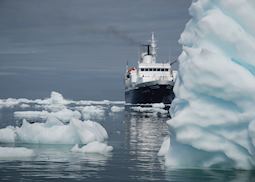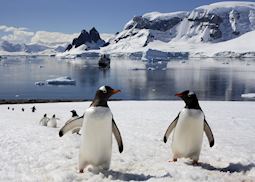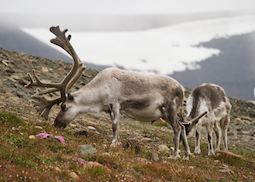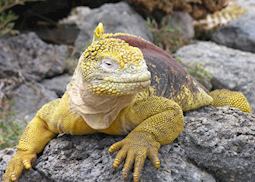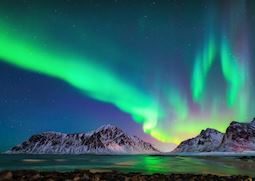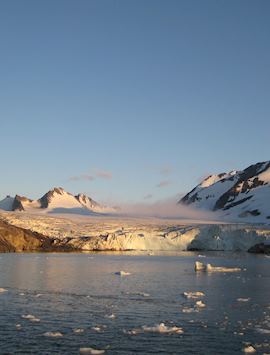
The Arctic’s scenic extremes have long beguiled visitors. In the far north of Svalbard, in the Norwegian Arctic, you’ll see glacier fronts, icebergs and mountainscapes. Thousands of guillemots turn towering cliffs into a riot of movement. In other parts, it’s the encompassing stillness that can stagger you — lonely bays dotted with icebergs, or an unbroken bed of sea ice engulfing the horizon line. Our Polar cruising team have experienced Svalbard on their own voyages, and they’re well-placed to help you choose the ideal itinerary and vessel for your Arctic expedition cruise.
Polar bear sightings, understandably, receive much fanfare. But, as our specialists will tell you, there are also walruses and numerous whale species to look out for, not to mention a host of birdlife. They’ll also recommend you explore Longyearbyen, a permanent human settlement whose existence and history are a surprising and enriching aspect of an Arctic vacation.
Suggested tours for the Arctic
These tours give you a starting point for what your vacation to the Arctic could entail. Treat them as inspiration, as each trip is created uniquely for you.
Why travel with Audley?
- 100% tailor-made tours
- Fully protected travel
- Established for over 25 years
- 98% of our clients would recommend us
Best time to visit
Our specialists advise on the best months to visit the Arctic, including information about climate, events and festivals.
Request our brochure
Covering all seven continents, The World Your Way shows you how you can see the world with us. It features trip ideas from our specialists alongside hand-picked stays and experiences, and introduces our approach to creating meaningful travel experiences.

Useful information for planning your vacation in the Arctic
The Arctic region encompasses eight different countries — Canada, Greenland, Iceland, Norway, Sweden, Finland, Russia, and the United States — and consequently, many different languages. Depending on the trip you choose to take, the language spoken at the start and end points will differ. English, however, will be the lingua franca on board your ship.
Most of our Arctic cruises start in Norway where Norwegian is spoken, others start in Iceland where Icelandic is the official language. We also offer cruises starting in Nuuk in Greenland where Greenlandic is spoken by 70% of the population, although Danish is used in political and administrative circles, while in Canada, English is spoken across the Arctic alongside Inuit languages such as Inuktut, Inuktitut, Inuinnaqtun and Inuvialuktun.
Depending on where you start your Arctic trip, different currencies will be in use: in Norway, the Norwegian krone (NOK); in Iceland the Icelandic króna (ISK); in Greenland, the Danish krone (DKK); and in Canada, the Canadian dollar (CAD). However, you’re unlikely to need much cash as credit and debit cards are generally preferred and widely accepted. If necessary, you can withdraw money at an ATM at your arrival airport before you start your cruise. Normally a tab system operates on board, which you settle at the end of your trip.
Your Arctic cruise will include all meals on board your chosen vessel. Breakfast and lunch are typically hearty buffet-style meals, while dinner is usually from an à la carte menu. Dishes are generally pan-European or international in style with fish, meat, and vegetarian options available. In some destinations in Greenland or Canada, you may also be able to try traditional Inuit foods such as muktuk (whale blubber), muskox, or caribou, or you may have an Inuit food tasting on board your vessel.
You should expect to leave a tip before you leave your Arctic vessel, but guideline amounts will vary by ship and trip duration. Speak to your country specialist for advice on this.
For the latest travel advice for your Arctic destination, including entry requirements, health information, and the safety and security situation, please refer to the Canadian Government Travel & Tourism website.
You’ll journey through iceberg-choked fjords, visit small communities, and observe wildlife including ptarmigan, arctic foxes, seals, and (with luck) whales and polar bears. Depending on your vessel and weather conditions, you might have the opportunity to go kayaking or take a trip into shallower waters on a Zodiac, camp on the ice, take on a short trek, or visit Inuit settlements, historic sites, or a scientific research base. If you choose to travel towards the end of the year, you may also be lucky enough to spot the northern lights. Whatever time of year you choose to travel, on-board experts will also give talks on the region’s history, geology and wildlife while cruising between destinations.
You’ll stay on board your expedition cruise vessel for the duration of your time in the Arctic. Almost all cabins are en suite and have a window or porthole. However, there’s a range of vessels to choose from. Some are larger than others with more extensive facilities, while some are slightly more modern or European in feel, but all are equipped with expert guides, along with a fleet of Zodiacs and kayaks, to help you make the most of landings. You can browse our collection of Arctic expedition cruise vessels to find one that matches your preferences.
Where to go in the Arctic depends on what you want to see and how far, or how long, you wish to travel. An Arctic expedition to Svalbard offers the opportunity to see glaciers and fjords, polar bears, and Ny Alesund, the most northerly permanent research base in the world. In East Greenland you can learn about Inuit culture and visit modern-day Inuit communities as well as sailing down Scoresby Sund, the world's longest fjord.
Canadian cruises include a trip along the fabled Northwest Passage, stopping at ancient Inuit settlements, former trading posts, modern communities, and wildlife-rich preserves along the way. It’s worth nothing, however, that shore landings are always dependent on weather conditions, which can be fickle in the Arctic, and your cruise itinerary may have to change slightly as a result.
Despite the extreme conditions, the Arctic is teeming with wildlife from caribou and arctic foxes to snowy owls and hairy musk oxen. Seals, walrus, and migratory sea birds such as puffins are also often seen, minke and bowhead whales ply the waters around your vessel, and if you’re lucky, you may also spot the striking white beluga whale or, if visiting Canada or northern Greenland, the tusked narwhal. Sightings of polar bears are also possible, though as with all wildlife, not guaranteed.
You’ll usually need to fly to the start point of your cruise in order to get to the Arctic. Many of our Arctic cruise itineraries begin in Longyearbyen in Norway, so you’ll travel there by plane via Oslo. Other departure points include Reykjavik in Iceland, Nuuk in Greenland or points in Canada or Alaska, all of which you can easily reach by plane.
Depending on which part of the Arctic you visit, the time zone can vary considerably. For example, the time zone in Svalbard is UTC+1 hour, while in Nome, Alaska it’s UTC-8 hours. During the Arctic summer you can expect up to 24 hours of daylight, while winter plunges the region into long hours of darkness, with no daylight at all at higher latitudes for many months.
Taking a cruise is the best way to get around the Arctic. Your cruise vessel will take you from place to place on your expedition, but there are numerous options when it comes to exploring. Depending on your destination, you may take trips by Zodiac (motor-powered dinghies), by kayak, or on foot with experts such as naturalists, photographers, or a local guide.
Visa requirements differ across the Arctic region but in general no visas will be necessary. For Arctic expeditions starting in Norway, Greenland or Iceland, Canadian citizens will need to have a passport and evidence of a return or onward flight.
Speak to your doctor about recommended vaccinations for your Arctic destination. It’s also worth taking a look at the Government of Canada - travel vaccinations website, and checking you’re up to date with all recommended vaccinations in your home country.
If your passport is no more than ten years old and has three months’ validity on your departure date you should be ready to travel. Check your passport well in advance and speak to your specialist for up-to-date information.
The Arctic in pictures
Our expert guides to traveling in the Arctic
Written by our specialists from the viewpoint of their own travels, these guides will help you decide on the shape of your own trip to the Arctic. Aiming to inspire and inform, we share our recommendations for how to appreciate the Arctic at its best.
-
![My travels in Svalbard: An Arctic cruise]()
My travels in Svalbard
Venturing to Norway and then Svalbard on an Arctic cruise, Megan captured part of this journey on video.
-
Choosing your Polar cruise ![Zodiac excursion]()
Choosing your Polar cruise
Choosing your Polar cruise
The awe-inspiring polar regions of the Arctic and Antarctic, are among the most beautiful and captivating in the world. Irrespective of which region you choose, visiting one of the world’s ultimate travel frontiers should prove to be a truly unforgettable and enriching experience.
Read this guide -
A typical polar day ![Lemaire Channel, Antarctica]()
A typical polar day
A typical polar day
A trip to the Arctic or Antarctic is a real adventure but many travelers are unsure of what to expect during their voyage. Here, we share with you what a typical day on an expedition cruise in the Arctic or Antarctic is like and what you can expect to see and do.
Read this guide -
Arctic cruises to Svalbard ![The Sea Adventurer in the Canadian Arctic]()
Arctic cruises to Svalbard
Arctic cruises to Svalbard
Polar specialist Tom shares his experiences of expedition cruising in Svalbard in the Arctic Circle. He talks about the scenery you’ll be immersed in, the wildlife you may encounter, and what life’s like on board a polar expedition vessel.
Read this guide
Other popular destinations
Still looking for ideas? If the Arctic has captured your interest, we think you might also like these destinations.

